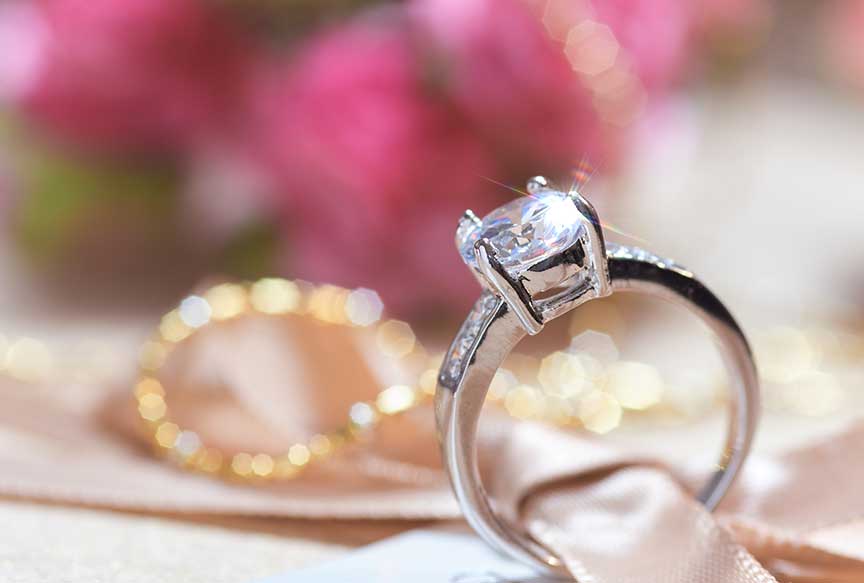The History of the Engagement Ring
by Frank Numbers

Engagement rings have evolved dramatically over time, and today’s stunning diamond-encrusted pieces are a far cry from the simple plant-based bands of ancient times.
But no matter how much has changed, these tokens of love still symbolize a couple’s commitment to one another.
In this post, we'll explore the history behind engagement rings — starting with modern day sparkle and working our way back through ancient cultures — to get a better understanding of where our current traditions come from.
Modern Day Engagement Rings
Today, couples can choose from a variety of dazzling diamonds set into white or yellow gold bands for their engagement ring. As illustrated by Diamonds On Richmond in Auckland, tastes are always changing.
These days, gemstones come in all shapes, sizes and colors to suit any budget or style — from colorful sapphire stones to classic round-cut diamonds. Some couples even opt for custom-made pieces created with ethically sourced gems and recycled metals.
Early 20th Century Engagement Rings
During wartime, many couples were forced to make their engagement rings out of what was available.
In countries like Germany, wooden or metal bands with no stones became common due to a shortage of resources. These rings served as a token of love and commitment until after the war when couples could afford more highly-crafted designs.
Even today, many people choose simple bands that recall this era of frugal romance as a way to honor loved ones who experienced great hardships during this time.
Early American Engagement Rings
During the colonial era in America, engagement rings were typically much simpler than they are today — made of wood or basic metals like silver and gold.
It wasn't until diamond mines were discovered in South Africa in the 19th century that diamonds became a popular choice for an engagement ring’s centerpiece stone.
Renaissance Engagement Rings
During the Renaissance era, engagement rings became more intricate in design and featured colorful gemstones such as rubies and emeralds set into gold bands.
This was a popular time for jewelers to incorporate symbolism into their designs, with many featuring lovebirds or Cupid’s arrows as the central motif of the ring. This style remained popular until the 18th century when diamonds came back in fashion.
Medieval Engagement Rings
In Europe during the Middle Ages, engagement rings grew more ornate than before — featuring intricate designs crafted from gold or silver set with precious stones such as diamonds and pearls.
These rings were not necessarily symbols of love, but indicators of wealth and power in the eyes of the Church.
Ancient Egyptian Engagement Rings
The earliest known evidence of an engagement ring comes from Ancient Egypt—where they were made from plants, reeds or rushes twisted into circles that symbolized eternal love.
The rings were often made from papyrus plant fibers, which would be woven together to create a small band. The Egyptians also believed that tying knots in the rings represented the unbreakable bond between two people.
Other ancient cultures including Greece, Rome and China soon adopted this tradition and started crafting their own engagement rings out of plants, metals, and precious gems such as diamonds and pearls.
Final Thoughts
Engagement rings have come a long way since ancient times, when simple plant-based bands represented eternal love between two people. Today’s modern pieces feature dazzling diamonds set into white and yellow gold bands, with custom-made designs created using ethically sourced gems and recycled metals.
Whether you’re searching for the perfect ring to symbolize your commitment or just curious about its evocative history, understanding these traditions around the world can help you make an informed decision. And no matter how much things have changed over time, one thing remains constant — engagement rings still represent a couple’s love for each other.
 >
>